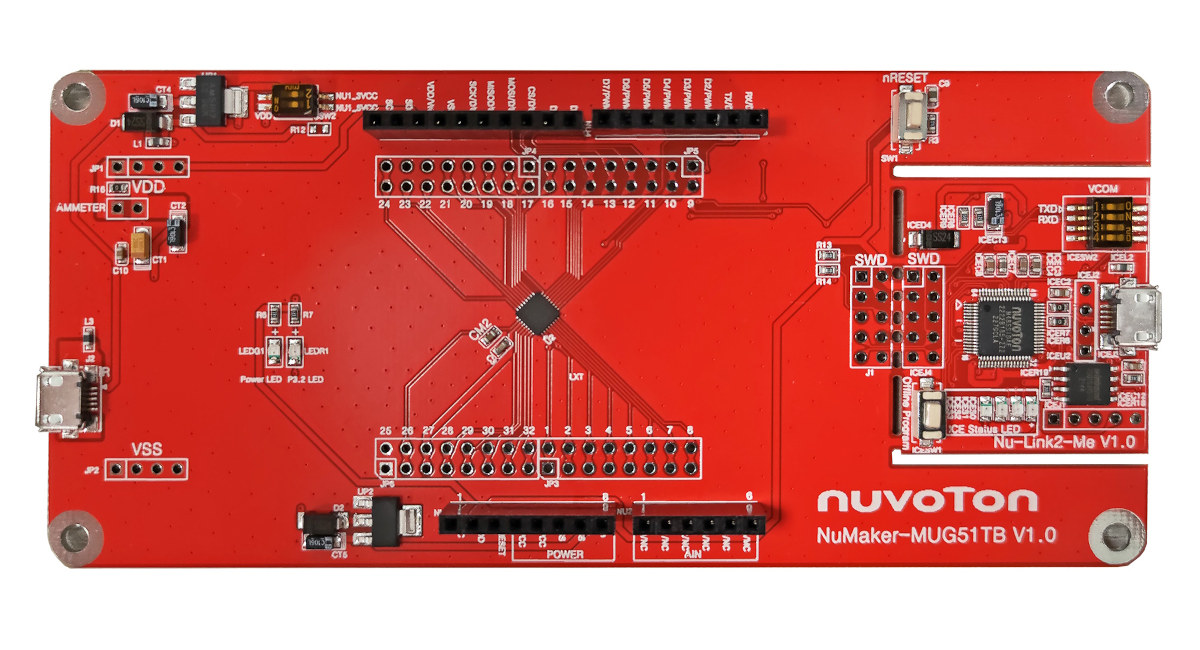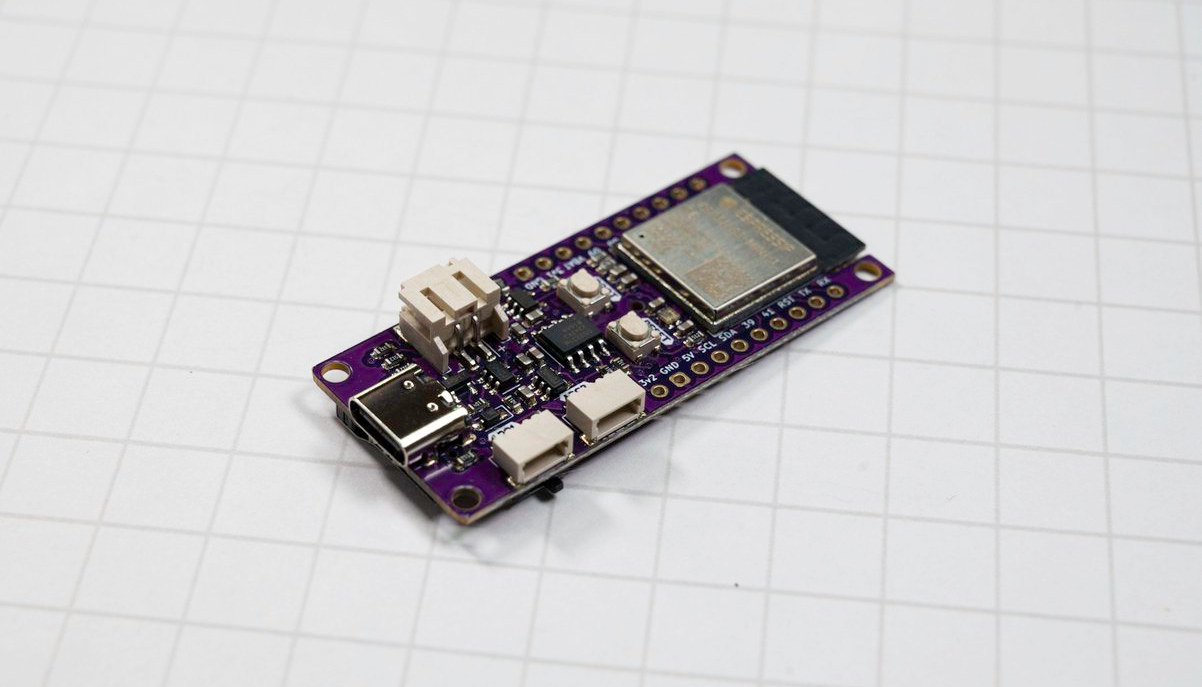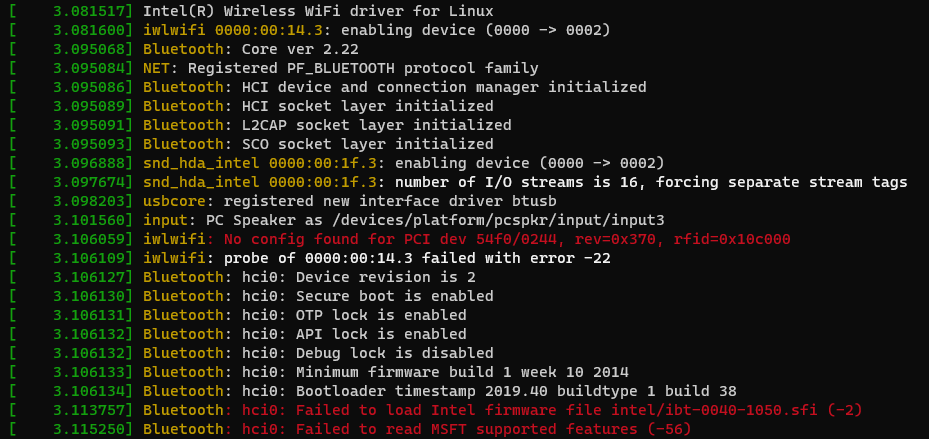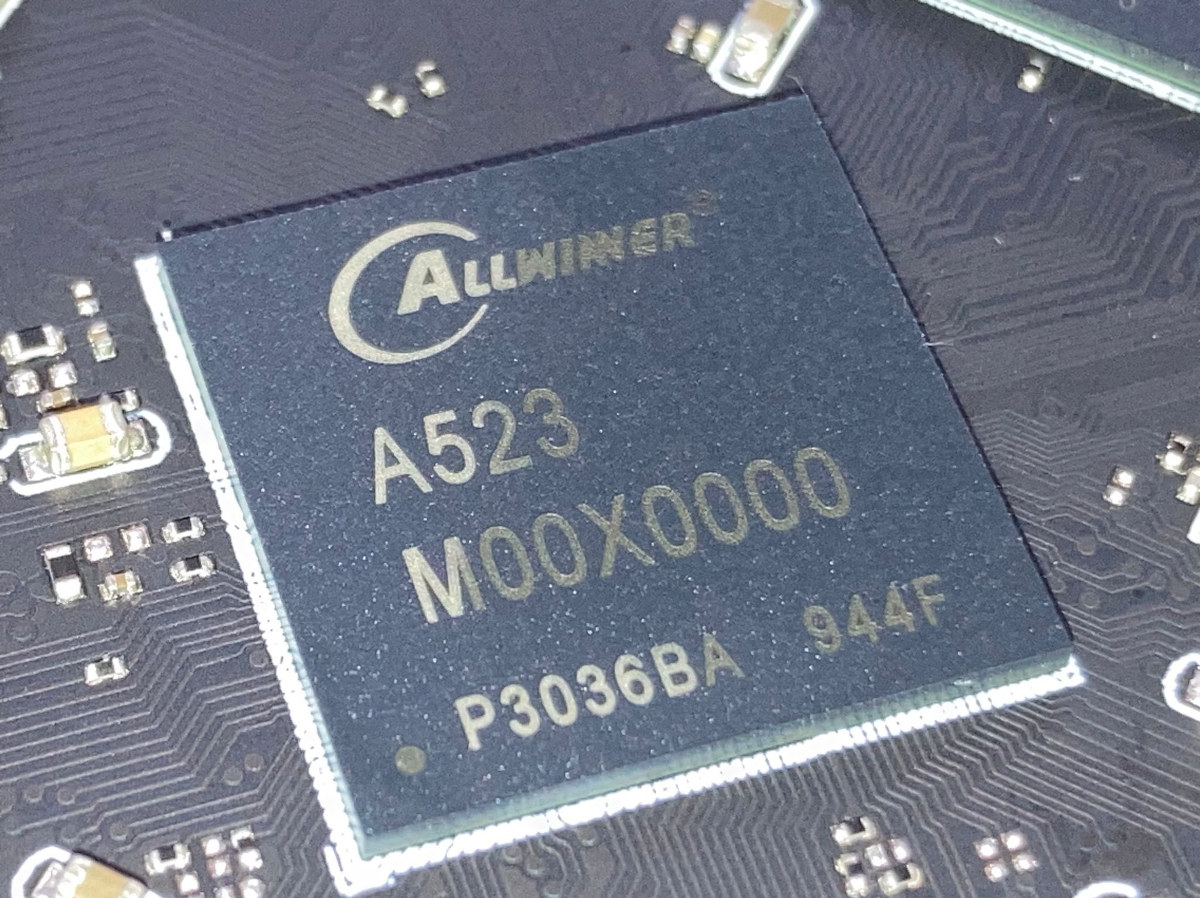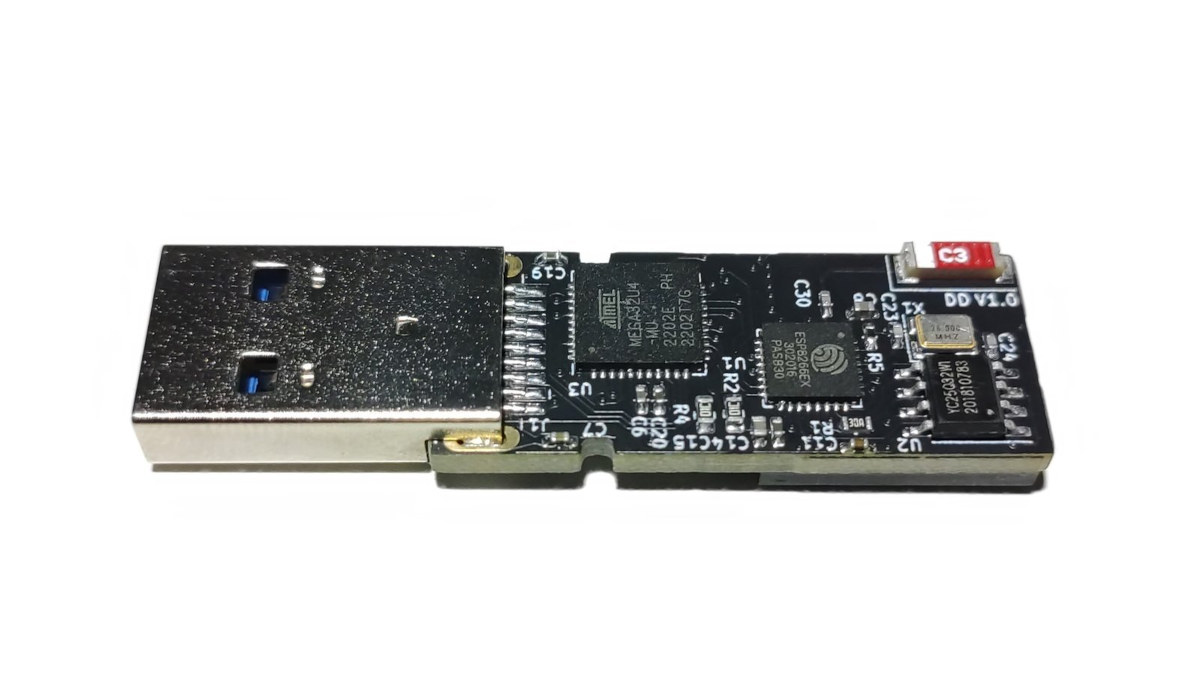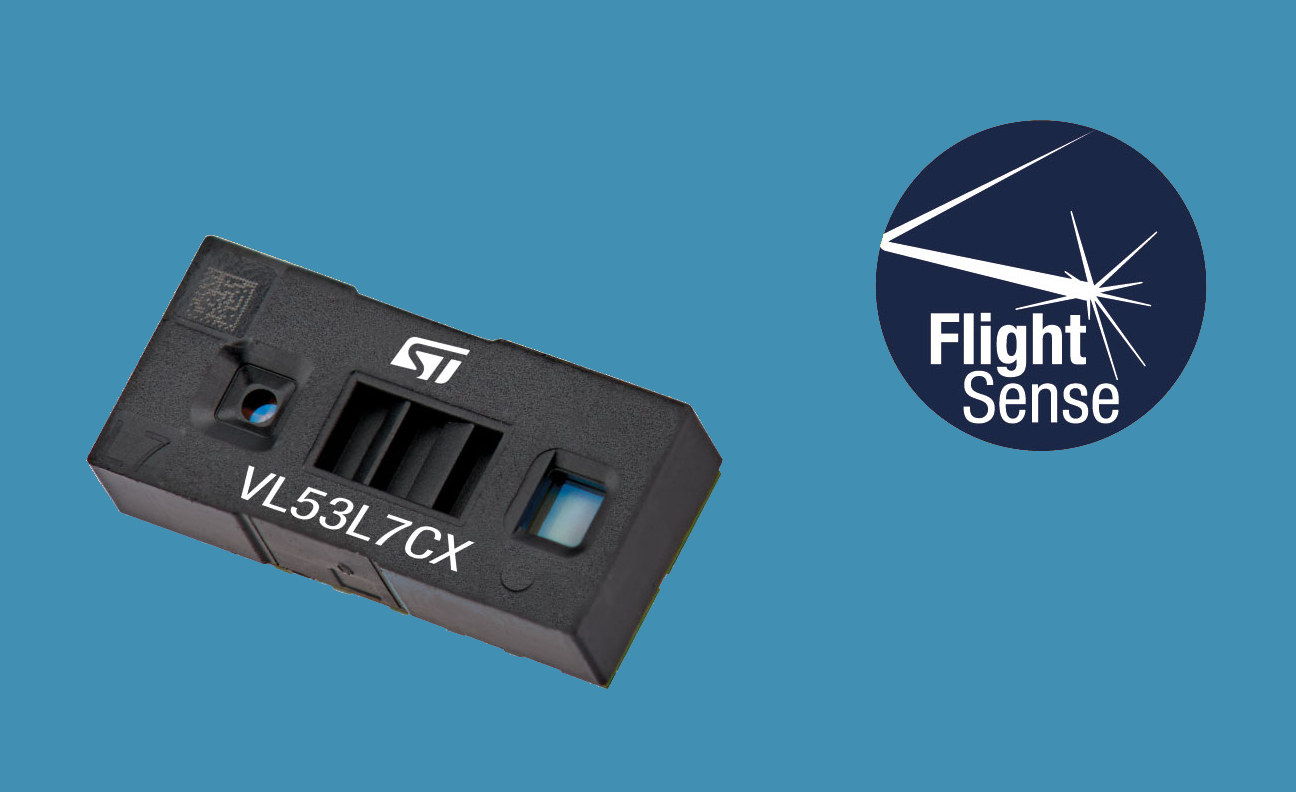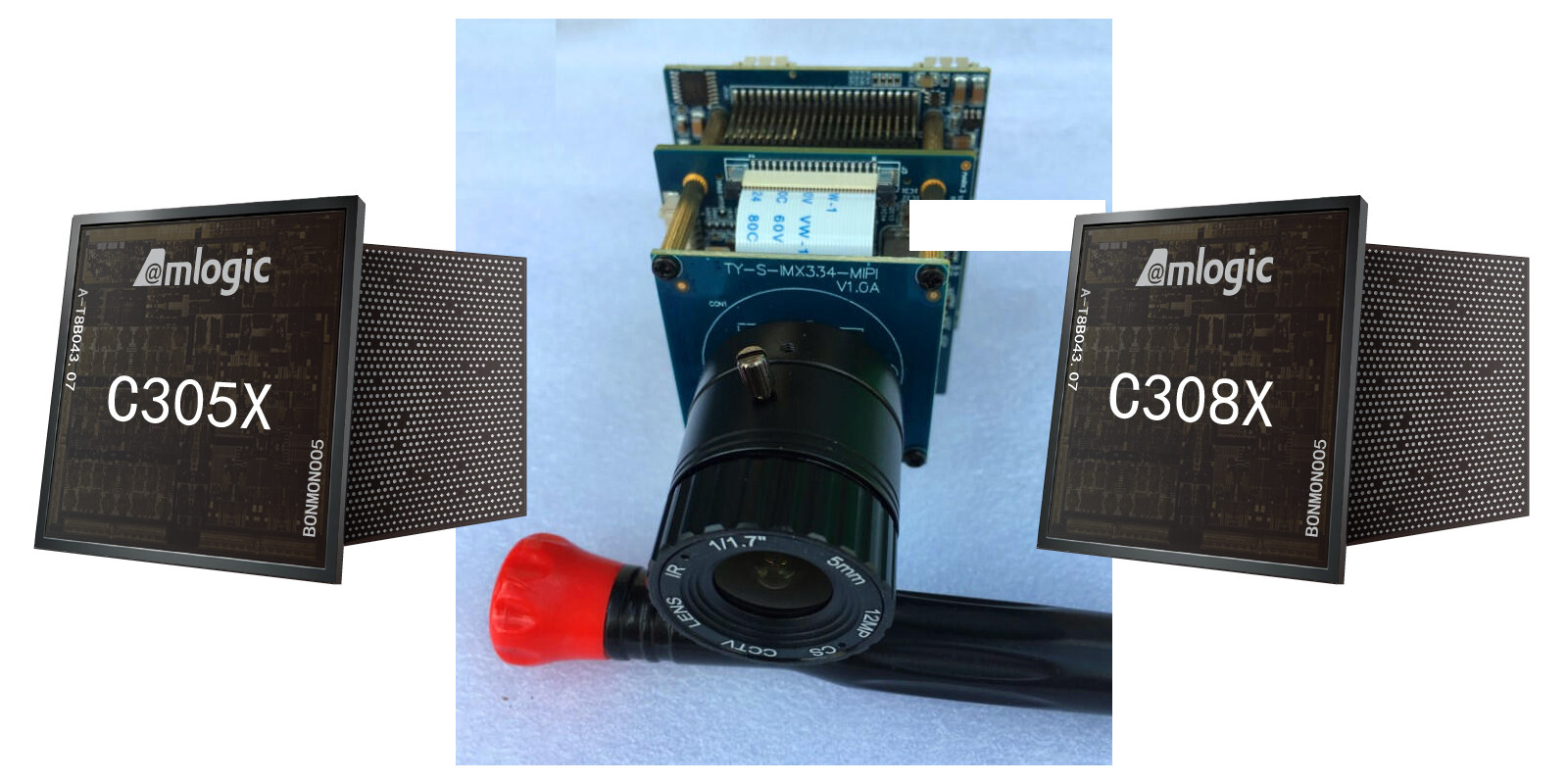Quansheng UV-K5, an inexpensive walkie-talkie/multiband radio that works in the 50 MHz to 600 MHz bands, has gotten an experimental firmware from the community that expands the range to 18 MHz to 1300 MHz, the maximum limits of the Beken BK4819 chip it is based on. The device is popular enough in the ham radio community that an unofficial blog has been created for it. The author explains that UV-K5 is better than other typical Chinese radios with “intuitive controls although the naming is a bit cryptic, and a nice crisp display”. He goes on to explain how to flash the firmware and reminds users they do this at their own risk in case they brick the device or break any regulations. The Quansheng UV-K5 supports the following bands with the stock firmware: F1: 50.0000-76.0000MHz (RX only) F2: 108-.0000-135.9750MHz (RX only) F3: 136.0000-173.9750MHz (TX and RX both) F4: 174.0000-349.9750MHz (RX […]
Nuvoton MUG51 8-bit 8051 microcontroller is made for battery-free devices
8-bit microcontrollers are here to stay despite the rise of 32-bit microcontrollers. Renesas introduced the RL78/G15 entry-level 8-bit microcontroller in a tiny 3x3mm package at the beginning of the year, and now Nuvoton has just unveiled the MUG51 8-bit 8051 microcontroller with a long-term production commitment. The MUG51 is specially designed for battery-free devices such as passive stylus pens and RFID cards. The 8-bit microcontroller embeds 1 KB SRAM, 16KB flash plus 4KB flash for user program loader, various peripherals with up to 24x GPIOs with interrupt, I2C, SPI, UART, DMA, and so on, as well as various timers. Nuvoton MUG51 specifications: Core – 1T 8051-based core running up to 7.3728 MHz Memory/Storage 1 KB SRAM 16 KB Flash Up to 4 KB Flash for user program loader (LDROM) 128 bytes SPROM (Security Protection ROM) ISP/ICP/IAP programming Peripherals Up to 24x I/O with interrupt capability 2x UART (Tx/RX), 2x I2C, […]
The Bee Data Logger ESP32-S3 board comes with RTC, microSD slot, and two Qwiic connectors for sensors
A few months ago, SparkFun released the “Datalogger IoT – 9DoF” no-code platform based on ESP32 with some built-in sensors, a microSD card, and two Qwiic connectors to add sensors in order to perform data logging with minimal to no coding. Smart Bee Designs looks to have shrunk the design, removing the built-in sensors in the processor, with the Bee data logger ESP32-S3 board that offers most of the same features plus a built-in DS3231 RTC and back battery for timekeeping, and the ability to leverage the vector extension in the ESP32-S3 for machine learning applications. Bee data logger specifications: Wireless module – Espressif Systems ESP32-S3-MINI-1 module CPU – ESP32-S3 dual-core Xtensa LX7 microcontroller with vector extensions with 512KB SRAM, 384KB ROM, WiFi 4 and Bluetooth 5.0 connectivity Storage – 8MB of QSPI flash PCB antenna Storage – MicroSD card slot up to 16GB capacity USB – 1x USB Type-C port […]
“Fixing” WiFi 6 on Linux in Alder Lake-N mini PCs (Intel N95, N100, Core i3-N300…)
Alder Lake-N mini PCs based on Processor N95, N100, and Core i3-N300/N305 SoCs are pretty popular these days due to their good performance/price proposition, and when Ian reviewed the Beelink EQ12 mini PC with an Intel N100, he seemed pretty happy about it, except the WiFi 6 and Bluetooth 5.2 AX101 module was not recognized in Ubuntu and other Linux distributions. It’s not an isolated issue, as one person commented WiFi 6 and Bluetooth were not working in Linux on a Beelink mini PC with the N100 in an article about the T9 Plus, and I found out many people complained about the lack of Linux drivers for the AX101 on Intel community forums. They also left various solutions some of which work, some don’t. If you are using Ubuntu or Debian, the easiest way seems to update the kernel to the latest Linux 6.4 as follows:
|
1 2 3 |
sudo add-apt-repository ppa:cappelikan/ppa sudo apt update && sudo apt full-upgrade sudo apt install mainline |
This will […]
Allwinner A523 octa-core Cortex-A55 processor to show up in tablets, SBCs
Allwinner A523 is an octa-core Cortex-A55 processor clocked at up to 1.4/1.8GHz in big.LITTLE (DynamIQ) configuration and mainly designed for tablets with multiple display interfaces such as two 4-lane MIPI DSPI interfaces, two MIPI CSI camera interfaces, a Mali-G57 GPU, and more. But the block diagram below also shows two Gigabit Ethernet (GMAC) interfaces and HDMI 2.0 output among other interfaces meaning it will likely be used in Smart Home products as the Allwinner R828/MR828, and possibly automotive products as the Allwinner T527. I first discovered the Allwinner A523 last March via a tweet by 柚木 鉉 (GLGH_), but there was little information at that time. We now have further details about the processor and upcoming products such as the Teclast P26T, and a potential Allwinner A523 single board computer or module. Allwinner A523 preliminary specifications: CPU Application – Octa-core Arm Cortex-A55 @ in big.LITTLE configuration with four cores @ […]
Diabolic Drive is a penetration testing USB key with 64GB storage, ESP8266 and ATmega32U4 microcontrollers
Diabolic Drive may look like a 64GB USB flash drive and show as such when you insert it into your computer, but it’s actually a wireless keystroke injection tool with a Microchip ATmega32U4 8-bit AVR microcontroller and an Espressif Systems ESP8266 WiFi SoC. Egypt-based UNIT 72784 says their cyber security tool enables Red Teaming – the practice of rigorously identifying an attack path to breach a device’s security – as it behaves like a flash drive while being able to deploy keyboard strokes wirelessly through the ESP8266 WiFi MCU. Diabolic Drive specifications: MCUs Microchip ATmega32U4 microcontroller @ 16 MHz (5V) acting as a Serial Bridge Espressif Systems ESP8266EX microcontroller @ 160 MHZ (3.3V) with WiFi 4 support ATmega32U4 and ESP8266 are connected via Serial and I2C protocols thanks to an LDO regulator. Storage 64 GB flash storage up to 20MB/s read, 10MB/s write 4MB W25Q32 SPI flash memory o Antenna […]
VL53L7CX Time-of-Flight (ToF) sensor offers camera-like 90° field of view
STMicroelectronics VL53L7CX is the latest FlightSense multi-zone Time-of-Flight (ToF) distance sensor from the company with the main highlight between its camera-like 90° diagonal field of view, derived from a 60° x 60° field of view… This is a significant improvement over the 61° diagonal field of view of the previous generation ToF sensors such as the VL53L8 or VL53L5CP, and the wider field-of-view is said to bring “lifelike situational awareness” to applications like home automation, computers, house appliances, robots, and industrial equipment with full-privacy since ToF sensors do not capture photos or videos like traditional cameras. STMicro VL53L7CX key features and specifications: 940 nm invisible light vertical cavity surface emitting laser (VCSEL) and integrated analog driver 60° x 60° square field of view (FoV) (90° diagonal) using diffractive optical elements (DOE) on both transmitter and receiver enabling square FoV Receiving array of single photon avalanche diodes (SPADs) Multizone ranging output […]
Amlogic C302X, C305X, and C308X Arm SoCs target Smart IP cameras
Amlogic C302X and C305X are dual-core Arm Cortex-A35 processors, while the C308X is a dual-core Cortex-A55 processor with all SoCs designed for Smart IP cameras with the integration of an AI accelerator up to 4 TOPS, and 1080p30 H.264/H.265 video encoding. I was first informed about Amlogic C302/C305/C308 SoCs for Smart cameras as far back as June 2019, or about four years ago, but there wasn’t enough information to write anything about those at the time. But I’m now seeing more details about the camera SoCs, now named C302X, C305X, and C308X, so it’s a good time to have a closer look. Amlogic C302X Amlogic does not have a product page for this model, so I need to rely on a recent commit in the Linux Kernel mainline list to extra some information. The Amlogic S302X is a dual-core Cortex-A35 processor found in the Amlogic AW409 development board (likely internal […]



